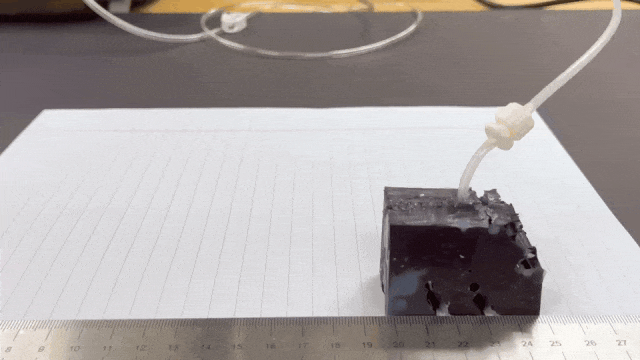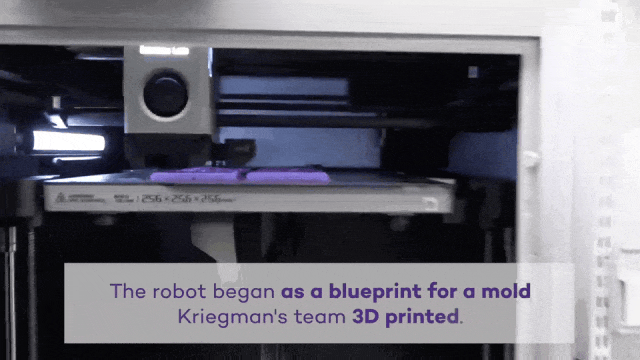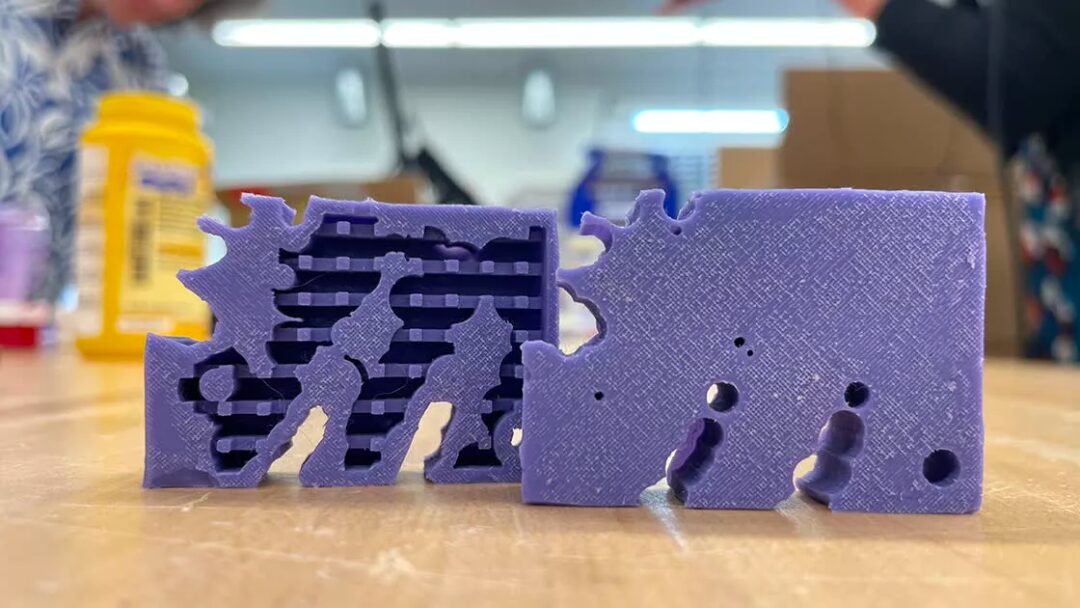Originally published on Machine Heart
Inspired by the evolutionary design of nature, the automation of robot design using evolutionary algorithms has been attempted for twenty years, but efficiency remains low. Now, from a soap-like substance to a successfully walking robot, the entire design process using AI on a laptop (consumer-grade hardware) took only 26 seconds.
The difficulty of designing a robot has always been evident due to the complex interdependencies between the robot’s physical structure, sensors, motion layout, and behavior. To date, the many details of each robot are manually determined after months or years of iterative conception, prototyping, and testing by human designers.
Previously, some researchers have attempted to use evolutionary algorithms to automatically design robots, but their efficiency was still very low: designing robots in simulation while ensuring these robots exhibit the desired behaviors after manufacturing could take days of supercomputing time.
Recently, a team led by researchers from Northwestern University developed the first AI capable of designing robots from scratch, with their research published on October 3 in the Proceedings of the National Academy of Sciences.

Paper link: https://www.pnas.org/doi/epdf/10.1073/pnas.2305180120
Notably, this AI runs on a standard laptop, completing the entire design process in just 26 seconds without any design clues provided by the researchers. In other words, the AI itself realized that “long legs” are a good way to traverse land.
When AI Designs a Robot from Scratch
“We discovered a very fast AI-driven design algorithm that bypasses the long evolutionary history and does not rely on human designers’ biases,” said Sam Kriegman from Northwestern University. Sam Kriegman is an assistant professor of computer science, chemistry, biological engineering, and mechanical engineering, and a member of the Center for Robotics and Biosystems.
“We told the AI we wanted a robot that could walk on land, then pressed a button, and in the blink of an eye, it designed a robot that looked nothing like any animal that has ever walked on Earth. I call this process ‘instant evolution.'”
Initially, researchers gave the AI a simple prompt: design a robot that can walk on a flat surface.
While nature took billions of years to evolve the first walking species, the new algorithm compressed this evolutionary process to lightning speed—designing a successfully walking robot in just 26 seconds.

Its design speed is not only fast but can also run on a personal computer and design entirely new structures from scratch. This contrasts sharply with other AI systems, which typically rely on supercomputers and massive datasets. Moreover, even after processing vast amounts of data, such systems are often limited by human creativity—merely mimicking past human works rather than generating new ideas.
The AI starts with a block of material about the size of a bar of soap, initially just wobbling and unable to walk. The AI knows its goal has not been achieved, so it quickly iterates on the design. With each iteration, the AI evaluates the effectiveness of its design, identifies flaws, and updates the robot’s structure through trimming. Eventually, the robot can bounce in place, then jump and move forward. After nine attempts, the AI designed a robot that can walk half its body length per second, about half the speed of a human.

The entire design process—from a non-functional block to a successfully walking robot—took only 26 seconds on a laptop.
To see if this robot could work in real life, Kriegman and his team followed the design blueprint to 3D print a mold of the negative space around the robot’s body, then filled it with liquid silicone, and after a few hours, removed the cured silicone from the mold, resulting in a soft and elastic material.


But can it walk? Next, the researchers inflated it (with air), causing its three legs to swell, and upon deflation, the legs retracted. By continuously pumping air into the robot, the three legs repeatedly expanded and contracted, allowing the robot to slowly but steadily begin walking.

The Birth of a New Organism
David Matthews, a scientist in Sam Kriegman’s lab and the first author of the paper, closely collaborated with Sam Kriegman and other co-authors Andrew Spielberg, Daniela Rus (MIT), and Josh Bongard (University of Vermont) for several years to achieve this breakthrough.
In early 2020, Kriegman gained widespread attention for developing xenobots, the first living robots made entirely from biological cells. Now, Kriegman and his team view the new AI as the next step in exploring the potential of artificial life.
This robot itself is quite unremarkable—small, soft, and misshapen, made from inorganic materials. But Kriegman states that this means we have taken the first step towards a new era of AI design tools that can directly interact with the world like animals.

“When people see this robot, they might see a useless little gadget,” said Kriegman, “but I see the birth of a new organism.”
“Now, as AI generates better robot bodies in real-time, anyone can see the evolution in action,” Kriegman said. “Previously, weeks of trial and error were needed on supercomputers, and of course, any animal has gone through billions of years of trial and error before running, swimming, or flying because evolution cannot foresee the future and cannot know whether a specific mutation is beneficial or disastrous. We have found a way to strip away the obscuring factors, compressing billions of years of evolutionary history into an instant.”

Sam Kriegman and the robot
On its own, the AI unexpectedly came up with the same solution for walking as nature did: legs. But unlike nature’s perfectly symmetrical designs, the AI took a different approach: it designed a robot with three legs, fins on its back, a flat face, and covered in holes.
“This is interesting because we didn’t tell the AI that the robot should have legs,” he said. “It rediscovered that legs are a good way to move on land. In fact, legged motion is the most efficient form of ground locomotion.”
While evolving legs makes sense, the design of these holes is somewhat odd, as the AI seems to have randomly punctured them. Kriegman hypothesizes that the porosity could reduce weight and increase flexibility, allowing the robot to bend its legs and walk.
“We really don’t know what these holes are for, but we know they are important,” he said. “Because when we remove these holes, the robot either cannot walk anymore or walks clumsily.”
Overall, Kriegman is surprised and fascinated by the robot’s design, noting that most human-designed robots either look like humans or resemble dogs or hockey pucks.
“When humans design robots, we tend to make them look like familiar objects,” he said. “But AI can create new possibilities and evolutionary pathways that humans have never considered, helping us think differently and solving some of our most difficult problems.”
While the first robot designed by AI can only stagger forward, Kriegman imagines a new world where AI designs tools. One day, AI-designed robots could navigate through rubble to find trapped people and animals or traverse sewers to repair damage. AI could also design nanobots to enter the human body, clear arteries, diagnose diseases, or kill cancer cells.
“The only thing stopping us from using these new tools and therapies is that humans don’t know how to design them,” he said. “Fortunately, AI has its own ideas.”
Reference Links
https://www.pnas.org/doi/10.1073/pnas.2305180120
https://www.youtube.com/watch?v=doS94hdQJu4